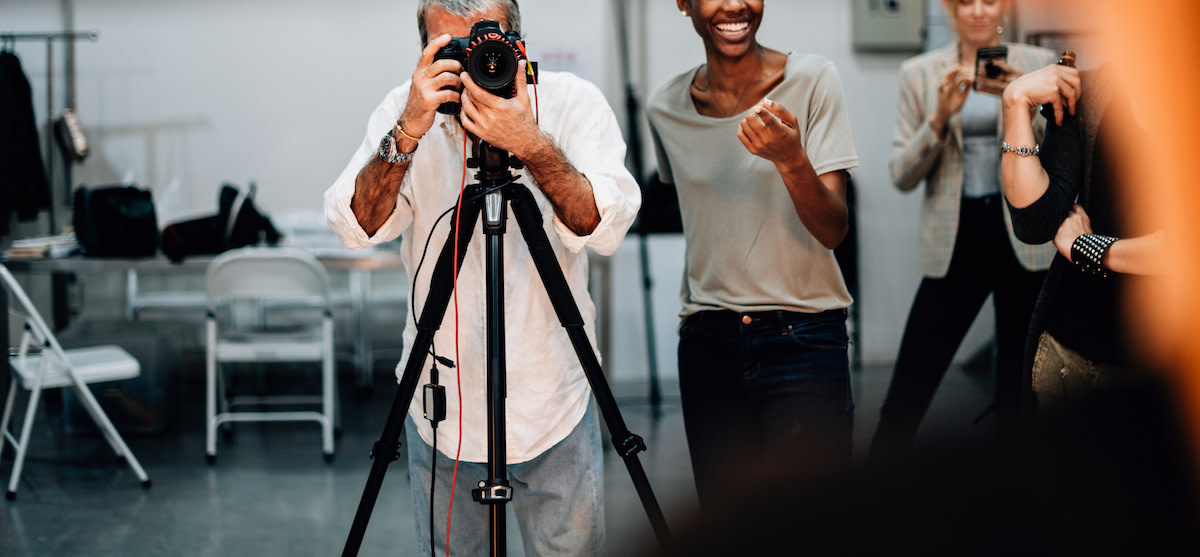What Is the Male Gaze? Criticisms of the Male Gaze in Media
Written by MasterClass
Last updated: Sep 26, 2022 • 3 min read
The male gaze places women in the context of male desire, essentially portraying the female body as eye candy for the heterosexual man. By valuing the desires of the male audience, the male gaze supports the self-objectification of women.
Learn From the Best
What Is the Male Gaze?
According to feminist theory, the male gaze is a sexualized way of portraying women. By objectifying women, the male gaze represents women through the sexual desires of heterosexual male viewers. It depicts the female body and personality as an object for men to view, own, and conquer.
This objectification of women has been prevalent in literature, cinema, and the visual arts throughout history. For example, in cinema, the camera often uses close-up shots to highlight female actresses’ bodies and sexualized appearances. This style of filming places the desires and thoughts of the female character as secondary to those of the male characters.
A Brief Overview of the History of the Male Gaze
The objectification of women has occurred for centuries, although people have begun to discuss the concept of the male gaze only relatively recently. Here is a quick look at the history of the male gaze:
- Coining the term: The term male gaze dates back to the 1972 docuseries Ways of Seeing. In this television series, art critic John Berger focused on analyzing Western European art, countering the traditional way of viewing and depicting the female body. Berger argued there had been a long cultural and artistic history of portraying women as passive objects to please men.
- Furthering the concept: Following Berger’s work, feminist and filmmaker Laura Mulvey used the term “male gaze” in her 1975 essay, “Visual Pleasure and Narrative Cinema.” Mulvey used a psychoanalytical lens to analyze the treatment and portrayal of women in Hollywood, exposing the narrative of misogyny. Mulvey argued mainstream films focused on pleasing the male scopophilia (the sexual pleasure of looking).
- Lasting impact: Mulvey’s essay continues to influence media studies and the way film theorists examine and produce cinematic work as filmmakers move away from the male gaze and support more positive ideologies.
Criticism of the Male Gaze
The male gaze has a negative impact on women since it conditions women to adhere to a patriarchal conception of how a woman should look and act. It influences how women view themselves, as it emphasizes physical appearance, which can negatively impact their mental health, lowering their levels of self-esteem. By placing women in subservient roles to please the male spectator, female empowerment is secondary to male sexual desires and the patriarchy.
When advertisements, TV shows, movies, and artwork depict women as sexual objects, young girls accept this point of view as the norm. Body shame is another side effect of the male gaze, as women compare themselves to these sexualized images of female characters in the media. The male gaze constricts how women define themselves, diminishing their potential purposes outside of a sexualized and objectified context.
How to Combat the Male Gaze
By understanding the impact of the male gaze, you can help generate awareness and initiate important conversations relevant to feminism. Here are three steps you can take as you start to combat the male gaze:
- Apply a critical lens. Understanding how to identify the male gaze can help you think critically about different forms of visual media. Spot the types of stereotypes and negative images certain people associate with the male gaze so you can help eliminate the harmful narrative.
- Place women in roles of empowerment. Counter the male gaze by placing women in roles of empowerment and authority. By removing the tropes associated with the male gaze and changing the images certain people associate with the female character, young girls can view themselves in productive and successful roles.
- Spread awareness. Engaging in productive conversations is a great starting point for combating the male gaze. By discussing the male gaze and its negative effects, you can help spread awareness and change the narrative.
Learn More About Feminism
Feminism is an intersectional movement with a focus on issues that touch every part of our lives, including reproductive rights, workplace culture, and caregiving. Gain access to exclusive videos on feminism with the MasterClass Annual Membership and get a crash course from leaders adrienne maree brown, Gloria Steinem, Amanda Nguyen, and Tina Tchen.
